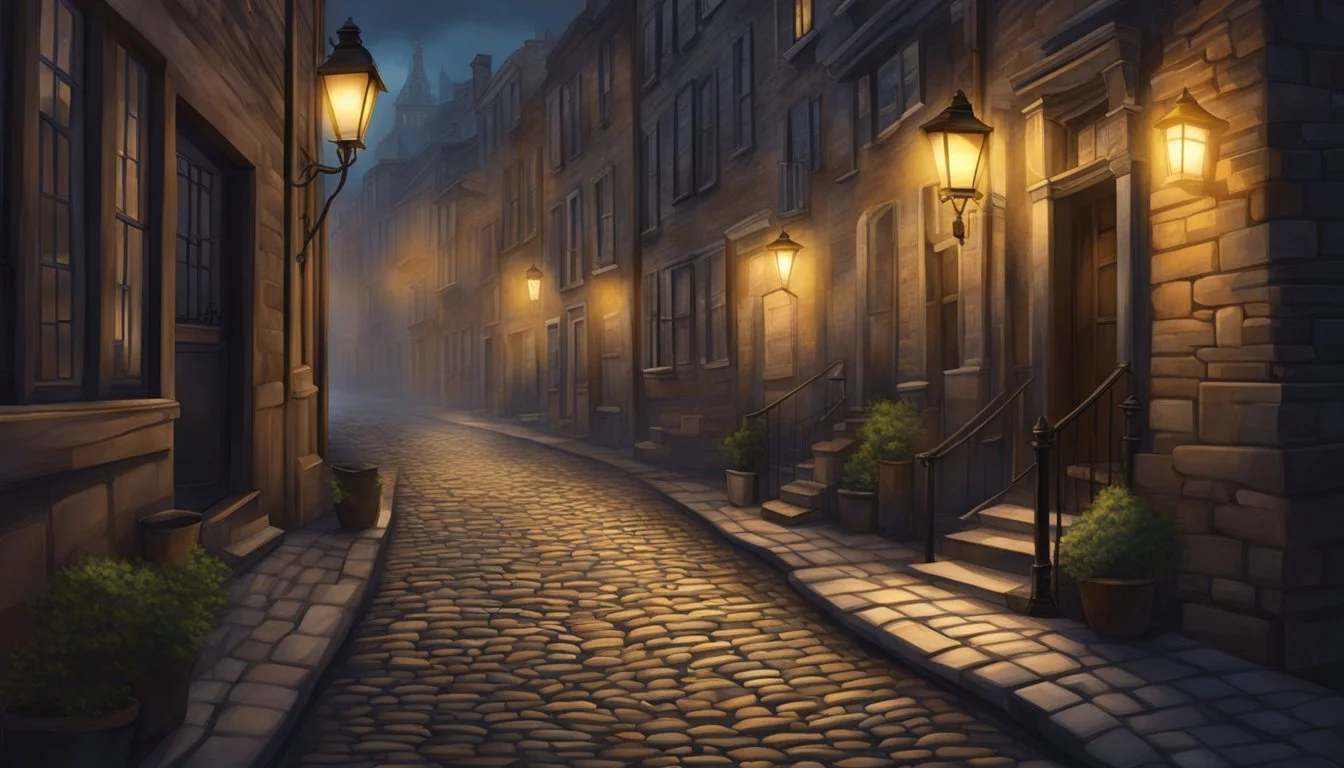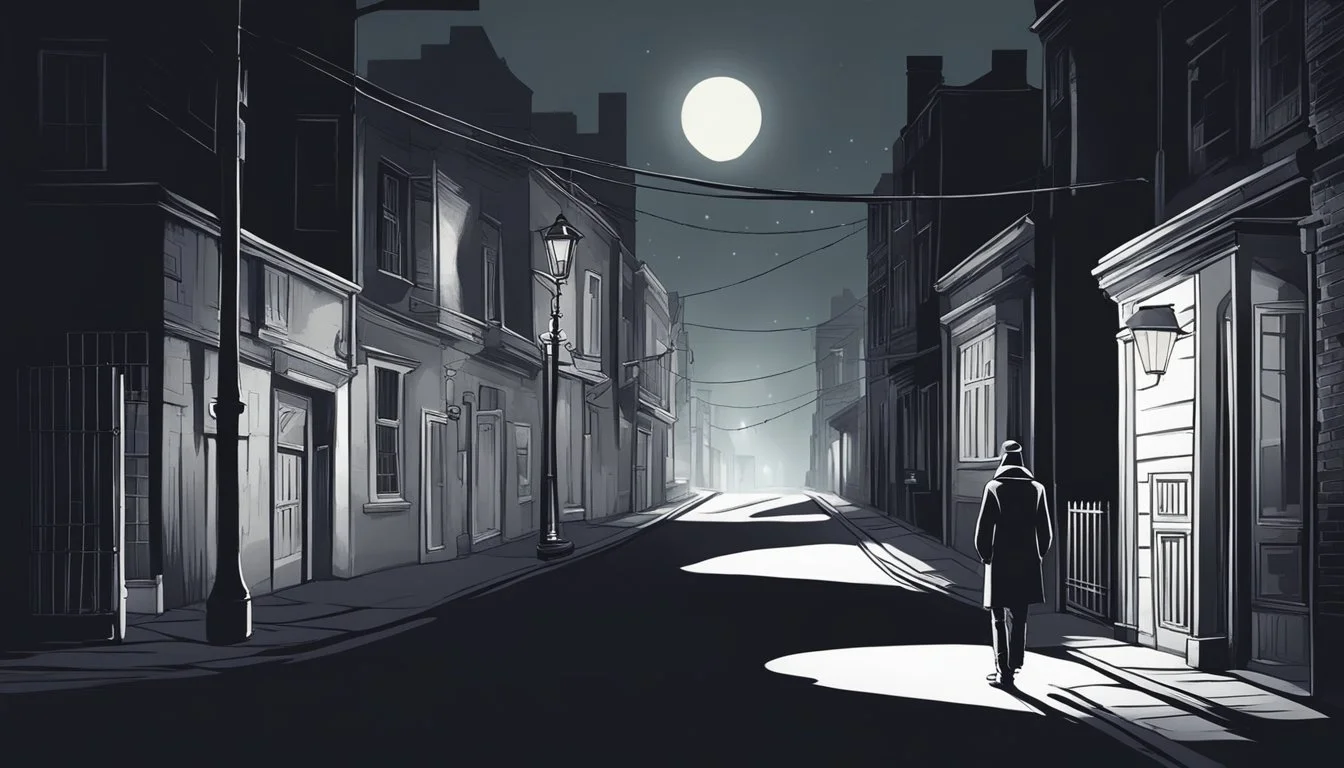The Midnight Assassin by Skip Hollandsworth: Unmasking Texas' First Serial Killer
In 1885, a terrifying series of murders gripped Austin, Texas, as an unknown killer stalked the city's streets under cover of darkness. Skip Hollandsworth's "The Midnight Assassin" delves into this chilling true crime narrative, exploring America's first documented serial killer case. The book offers a gripping account of the panic and scandal that engulfed Austin as the killer struck repeatedly, targeting women from all walks of life.
Hollandsworth's meticulous research brings to life the atmosphere of late 19th-century Austin, a city on the brink of transformation from frontier outpost to burgeoning metropolis. The author weaves together historical details, eyewitness accounts, and police reports to create a vivid portrayal of the era and the impact of these brutal crimes on the community.
"The Midnight Assassin" not only recounts the grisly details of the murders but also examines the societal and cultural context of the time. Hollandsworth explores how the concept of a serial killer was yet unknown, leaving authorities and citizens struggling to comprehend the nature of the threat they faced. This narrative history sheds light on a forgotten chapter of American crime, offering readers a compelling glimpse into a terrifying moment in Texas history.
Author Profile: Skip Hollandsworth
Skip Hollandsworth is an accomplished American writer and journalist known for his work in true crime and feature writing. His career spans decades of award-winning journalism and literary achievements.
Career at Texas Monthly
Hollandsworth serves as the executive editor for Texas Monthly magazine. He joined the publication in the 1980s and has become one of its most prominent voices. His long-form articles cover a wide range of topics, with a particular focus on crime stories and Texas culture.
Hollandsworth's writing has earned him numerous accolades. In 2010, he won the prestigious National Magazine Award for Feature Writing from the American Society of Magazine Editors. The winning piece, titled "Still Life," told the poignant story of John McClamrock.
Contributions to Crime Journalism
Hollandsworth has made significant contributions to crime journalism through his in-depth reporting and storytelling. His true crime book "The Midnight Assassin" examines a series of murders in 1880s Austin, Texas.
The book delves into the hunt for America's first known serial killer, predating even London's Jack the Ripper. Hollandsworth's meticulous research and vivid prose bring this historical case to life, shedding light on a forgotten chapter of criminal history.
His work often explores the complexities of criminal cases, the impact on communities, and the challenges of law enforcement in solving these crimes. Hollandsworth's ability to craft compelling narratives has established him as a respected voice in true crime literature.
Historical Context
Austin, Texas in the late 1800s was a city on the brink of transformation. It balanced on the edge between its frontier roots and aspirations of becoming a modern urban center. This period saw rapid changes in Austin's development, social structure, and cultural landscape.
Austin, Texas in the Late 1800s
Austin in the 1880s was a growing city with a population of around 11,000. The Texas State Capitol, completed in 1888, stood as a symbol of the city's increasing importance. Dirt roads and wooden sidewalks lined the streets, while gas lamps illuminated the night.
The city boasted a mix of wooden frame houses and more elaborate limestone structures. Horse-drawn carriages and early streetcars provided transportation. Telegraph lines connected Austin to the wider world, bringing news and commerce.
Cosmopolitan Metropolis of the Era
Austin strived to become a true cosmopolitan center during this period. The University of Texas, founded in 1883, brought intellectual prestige to the city. Opera houses and theaters offered cultural entertainment.
The arrival of the railroad in 1871 spurred economic growth. Banks, hotels, and businesses flourished along Congress Avenue. Electric streetlights, installed in 1895, showcased Austin's embrace of modern technology.
Austin's ambitions extended beyond Texas. City leaders promoted it as the "Athens of the Southwest," hoping to attract investors and settlers from across the nation.
Social Landscape: Race and Class
Austin's society in the late 1800s was marked by stark divisions of race and class. Wealthy white residents lived in grand houses on the west side, while working-class communities and freed slaves occupied the east.
African Americans, despite facing discrimination, established thriving communities like Wheatville and Clarksville. They built churches, schools, and businesses to serve their needs.
The city's Mexican American population grew during this period, contributing to Austin's cultural diversity. Class distinctions were visible in clothing, housing, and social circles.
Women's roles were expanding slowly. Some worked as teachers or in retail, while others pushed for greater rights and education. This complex social tapestry formed the backdrop for the events described in "The Midnight Assassin."
Overview of the Midnight Assassin
The Midnight Assassin terrorized Austin, Texas in 1884-1885, becoming America's first known serial killer. This brutal murderer targeted women, using axes, knives, and steel rods to commit horrific crimes that paralyzed the city with fear.
The First Murders and Growing Terror
On December 30, 1884, the Midnight Assassin struck for the first time, killing two women. The victims were found brutally murdered in their beds. This shocking event marked the beginning of a year-long reign of terror in Austin.
As more killings occurred, panic spread throughout the city. The murderer attacked women indiscriminately, regardless of race or social status. The use of various weapons and the gruesome nature of the crimes intensified public fear.
Local law enforcement struggled to identify and apprehend the killer. The lack of modern forensic techniques hampered their efforts. The community lived in constant dread, especially on moonlit nights when the Assassin was known to strike.
Comparison with Jack the Ripper
The Midnight Assassin's crimes predated London's infamous Jack the Ripper by several years. Both serial killers targeted women and used similar methods, such as knife attacks. However, the Assassin's use of multiple weapons set him apart.
Unlike Jack the Ripper, who focused on a specific area, the Midnight Assassin struck across Austin. This wider range of activity made him more challenging to track. The Assassin's crimes received less international attention than the Ripper's, despite their equally brutal nature.
Both cases remain unsolved, fueling ongoing speculation and interest. The Midnight Assassin's spree ended abruptly in December 1885, leaving many questions unanswered. This mysterious conclusion adds to the enduring intrigue surrounding America's first documented serial killer.
The Infamous Murders
The Midnight Assassin terrorized Austin, Texas with a series of brutal killings beginning in December 1884. The murders shocked the city and baffled investigators due to their viciousness and seemingly random nature.
Victims of the Midnight Assassin
The killer predominantly targeted women, striking victims from diverse backgrounds. His first known victim was Mollie Smith, attacked on December 30, 1884. Over the next year, he claimed several more lives.
Victims included both African American and white women. Some were servants, while others came from prominent families. The murders occurred in different areas of Austin, from poor neighborhoods to wealthy districts.
The randomness of victim selection increased public fear. No one felt safe, as the killer seemed to strike without discrimination.
The Role of Weapons
The Midnight Assassin used a variety of brutal weapons in his attacks. Axes, knives, and long steel rods were his tools of choice.
Many victims were found horribly mutilated. The killer often used multiple weapons in a single attack. This level of violence shocked even hardened lawmen.
The use of different weapons made it difficult for investigators to establish a clear pattern. It also fueled speculation about the killer's identity and motives.
Investigation Challenges
Law enforcement faced numerous obstacles in their pursuit of the Midnight Assassin. The lack of forensic techniques hindered evidence collection and analysis.
The randomness of the attacks made predicting future targets impossible. Police struggled to protect the public and catch the killer.
Racial tensions in Austin complicated the investigation. Some officials initially focused on African American suspects, despite evidence suggesting otherwise.
As the murders continued, panic gripped the city. Citizens formed vigilante groups. The pressure on police to solve the case intensified with each new attack.
Public Reaction and Impact
The Midnight Assassin's reign of terror gripped Austin, Texas in fear and caused widespread panic. Citizens and the media grappled with the horrific nature of the crimes and the unsettling reality of a serial killer in their midst.
Citizens' Panic and Response
Austin residents lived in constant fear during the Midnight Assassin's killing spree. Women, particularly servants, were terrified to walk alone at night. Many families bolted their doors and windows, while others slept with weapons nearby for protection.
Neighbors formed vigilante groups to patrol the streets after dark. Some citizens left town altogether, seeking safety elsewhere. Local businesses saw a decline as people avoided going out in the evenings.
The murders shattered Austin's sense of security and small-town tranquility. Suspicion and paranoia permeated daily life as residents eyed strangers warily and questioned those around them.
Media Coverage and Public Perception
Newspapers provided extensive coverage of the gruesome crimes, fueling public fascination and fear. Sensational headlines and vivid crime scene descriptions captivated readers across Texas and beyond.
The press dubbed the killer "The Servant Girl Annihilator" and "The Midnight Assassin," cementing these monikers in the public imagination. Speculation ran rampant about the killer's identity and motives.
Many believed the murders were racially motivated, as several victims were Black women. Others theorized a crazed doctor or butcher was responsible. The inability to catch the killer led to criticism of local law enforcement.
The case attracted national attention, with newspapers as far away as New York reporting on the Austin murders. This media frenzy helped establish the concept of the serial killer in American culture.
The Hunt for the Killer
The search for the Midnight Assassin gripped Austin, Texas in the 1880s. Law enforcement and citizens alike mobilized to catch the elusive killer who terrorized the city for over a year.
Law Enforcement Tactics
Police deployed innovative methods to track the Midnight Assassin. They increased patrols in vulnerable areas and hired additional officers to bolster the force. Detectives meticulously examined crime scenes for clues, collecting physical evidence when possible.
Bloodhounds were used to try and track the killer's scent. Officers set up stakeouts in areas where attacks had occurred, hoping to catch the perpetrator in the act. The police chief even disguised himself as a woman to try and lure out the killer.
Despite these efforts, the Midnight Assassin remained at large. Frustration mounted as each new attack highlighted the limitations of 19th-century policing techniques.
Public Involvement and Leads
Austin's citizens played an active role in the manhunt. Neighborhood watch groups formed, with armed men patrolling streets at night. Residents reported suspicious individuals and activity to the authorities.
Newspapers published detailed accounts of the murders, sparking public interest and generating tips. A reward was offered for information leading to the killer's capture, prompting a flood of leads.
Many suspects were interrogated, including local vagrants and individuals with violent histories. Some were held for extended periods but ultimately released due to lack of evidence.
The mystery captivated the nation, drawing amateur sleuths and psychics to Austin. Their speculative theories added to the chaos of the investigation but failed to produce concrete results.
The Book's Legacy
"The Midnight Assassin" by Skip Hollandsworth has left an indelible mark on true crime literature and historical narratives. The book's impact extends beyond its gripping storytelling, influencing both literary circles and historical discourse.
Literary Acclaim
"The Midnight Assassin" achieved New York Times bestseller status, solidifying its place in contemporary literature. Critics praised Hollandsworth's meticulous research and engaging prose. The book's success sparked renewed interest in historical true crime narratives.
Many readers and reviewers described it as a "literary miracle," blending the suspense of a thriller with the accuracy of historical non-fiction. Hollandsworth's ability to recreate 1880s Austin captivated audiences, earning him comparisons to established true crime authors.
Contribution to American Historical Narrative
The book shed light on a lesser-known chapter of American history, bringing the story of America's first documented serial killer to a wider audience. It challenged the notion that serial killings were a modern phenomenon.
Hollandsworth's work prompted historians to reexamine the societal and cultural context of 1880s Texas. The book's exploration of race, class, and gender dynamics in 19th-century Austin provided valuable insights for social historians.
"The Midnight Assassin" also sparked discussions about law enforcement practices and media coverage in the late 19th century. It offered a unique perspective on the development of criminal investigation techniques in the United States.
Cultural Influence
Skip Hollandsworth's "The Midnight Assassin" made a significant impact on true crime literature and popular culture. The book's vivid portrayal of Austin's 1884-1885 serial killings captivated readers and influenced modern crime narratives.
Influence on Modern True Crime Genre
"The Midnight Assassin" helped shape the true crime genre by blending meticulous historical research with compelling storytelling. Hollandsworth's atmospheric writing style brought 19th-century Austin to life, immersing readers in the chilling events. The book's success inspired other authors to explore historical crimes with similar depth and narrative flair.
Many true crime writers now emulate Hollandsworth's approach of combining factual accuracy with engaging prose. This style has become increasingly popular in books, podcasts, and documentaries about serial killings and unsolved mysteries.
Comparative Analysis with Contemporary Works
"The Midnight Assassin" invites comparisons to Erik Larson's "The Devil in the White City," another seminal work in the true crime genre. Both books expertly weave historical context with gruesome details of serial killing sprees.
Hollandsworth's focus on the Texas-sized true-crime story distinguishes it from other works. The book's exploration of frontier justice and racial tensions in 19th-century Texas adds unique cultural insights.
Unlike some sensationalized accounts, "The Midnight Assassin" maintains a neutral tone while conveying the gothic horror of the events. This balanced approach has influenced subsequent true crime writers to strive for objectivity in their narratives.
Notable Figures
The Midnight Assassin case involved several victims and suspects who left their mark on Austin's history. These individuals' stories provide insight into the social dynamics and investigative challenges of 19th century Texas.
Sketches of the Victims
Eula Phillips, a 17-year-old wife and mother, became one of the Midnight Assassin's most notorious victims. Her brutal murder on Christmas Eve 1884 shocked Austin society. Phillips was found in her bedroom, partially clothed and horribly mutilated.
The killer also targeted servant women, including Mollie Smith and Eliza Shelley. These attacks highlighted the vulnerability of African American domestic workers in the city.
Investigators noted the victims came from diverse backgrounds, spanning different ages, races, and social classes. This pattern puzzled authorities and fueled public fear.
Biographical Details of Suspects
James Phillips, Eula's husband, faced intense scrutiny due to their tumultuous relationship. Rumors of infidelity and domestic violence swirled around the couple.
Maurice, a cook at Ravy's restaurant, briefly became a suspect. His late-night work hours and proximity to crime scenes drew police attention.
William Sidney Porter, later known as the author O. Henry, lived in Austin during the murders. While never formally accused, his intimate knowledge of the city led to speculation about his potential involvement.
Authorities also investigated several transient men, but concrete evidence remained elusive. The lack of a clear suspect profile added to the case's haunting granularity.
Historiography
Skip Hollandsworth's "The Midnight Assassin" exemplifies meticulous historical research combined with compelling narrative storytelling. The book reconstructs 19th century Austin through vivid details while examining how this early serial killer case was investigated and understood at the time.
The Methodology of Writing History
Hollandsworth draws on extensive primary sources to piece together the Midnight Assassin case. He analyzes police reports, newspaper articles, and personal accounts from the 1880s. This allows him to present the facts as they were known then, rather than viewing events through a modern lens.
The author also contextualizes the murders within the broader social and cultural landscape of 1880s Texas. He explores how factors like race relations, urbanization, and law enforcement capabilities shaped the investigation and public reaction.
The Incorporation of Narrative and Historical Detail
"The Midnight Assassin" brings 1880s Austin to life through rich historical detail. Hollandsworth describes the city's architecture, social customs, and daily routines. This immersive approach helps readers understand the environment in which the crimes took place.
The book weaves historical facts into a gripping narrative. It follows key figures like detectives, journalists, and suspects, creating suspense while adhering to documented events. This blend of storytelling and scholarship makes complex historical information accessible and engaging for modern readers.








